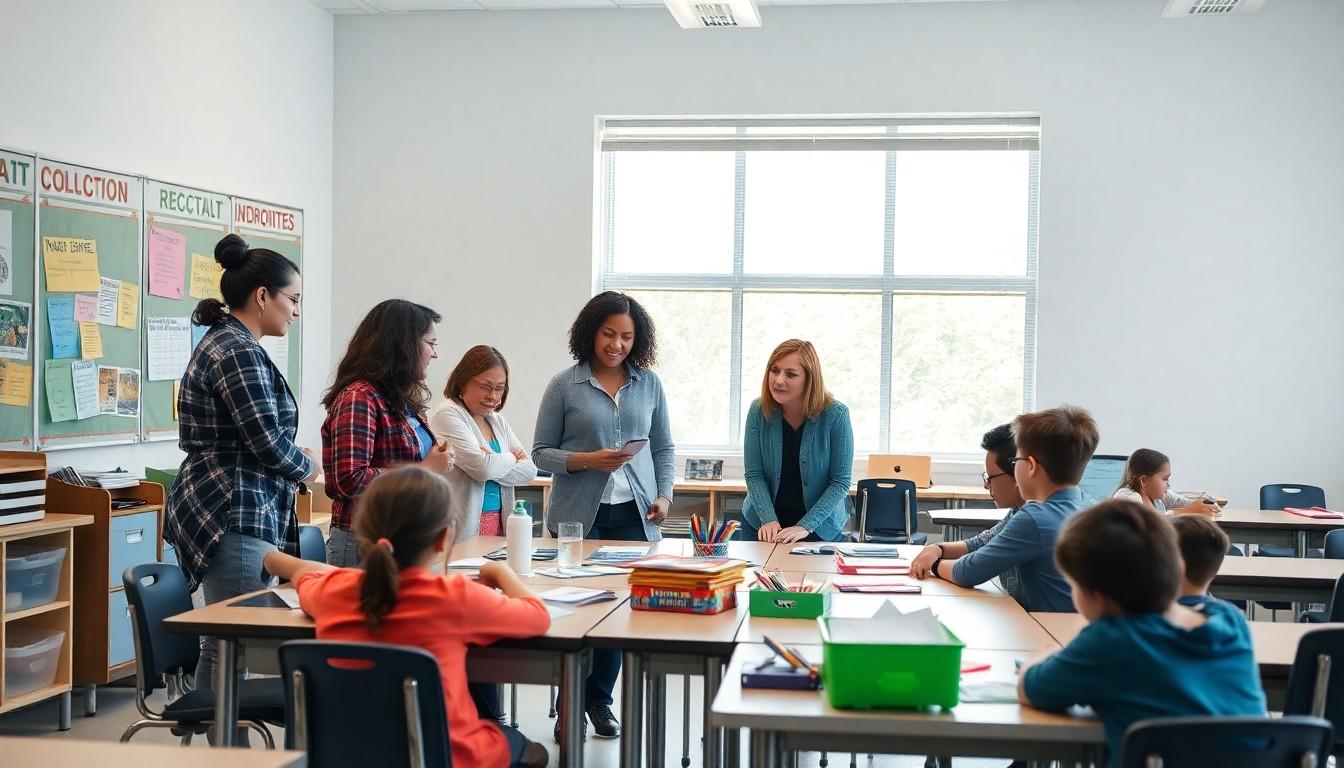In a world where every child deserves a fair shot at success, special education news is the unsung hero of the education system. It’s a whirlwind of updates, breakthroughs, and sometimes, a sprinkle of chaos that keeps educators, parents, and advocates on their toes. From innovative teaching methods to policy changes that can make or break a child’s future, staying informed is crucial.
Special Education News
Recent updates highlight critical changes and advancements in special education that influence students and educators. Staying informed on these developments remains essential for fostering inclusive learning environments.
Policy Changes Impacting Special Education
New federal guidelines promote inclusive practices, emphasizing equitable access to resources for students with disabilities. Education policies now require schools to implement individualized education programs (IEPs) with increased parental involvement. Funding allocations are also shifting to prioritize services that support diverse learning needs. Furthermore, states are adopting clearer assessments to track student progress, ensuring accountability across educational systems. These adjustments aim to improve educational outcomes for all students, enabling them to succeed in increasingly rigorous academic settings.
Innovations in Teaching Strategies
Innovative teaching methods are emerging, targeting diverse learning styles and needs. Educators are incorporating technology, such as augmented reality tools, to enhance engagement in the classroom. Collaborative learning approaches encourage peer interaction, fostering social skills and knowledge sharing among students. Universal Design for Learning principles promote flexible strategies tailored to individual strengths, optimizing teaching effectiveness. Evidence-based practices, like direct instruction and differentiated learning, continue to gain traction, aiding teachers in delivering personalized educational experiences. Such advancements pave the way for greater student achievement and support in various learning environments.
Spotlight on Inclusive Practices

Inclusive practices in education play a vital role in ensuring that all students thrive. These practices focus on creating environments where every learner feels valued and supported.
Successful Inclusion Models
Inclusion models like co-teaching and multi-tiered systems of support illustrate effective strategies in diverse classrooms. Co-teaching involves educators collaborating to provide instruction tailored to students’ varied needs. Multi-tiered systems of support offer different levels of intervention, ensuring students receive appropriate assistance. Schools adopting these models report higher levels of engagement among students with disabilities. Notably, positive outcomes, such as improved academic performance, emerge from these collaborative efforts.
Challenges in Implementation
Implementing inclusive practices often presents significant challenges. Funding restrictions limit resources available for specialized training and support. Additionally, resistance from staff can impede the adoption of new models. Limited administrative support hinders the commitment needed for sustained change. Schools must navigate logistical constraints, such as appropriate classroom arrangements and student-instructor ratios. Despite these obstacles, commitment to inclusive education remains crucial for fostering an equitable learning environment.
Advocacy and Awareness
Advocacy and awareness play vital roles in shaping special education. These efforts ensure that students with disabilities receive the support and resources necessary for success.
Role of Advocacy Groups
Advocacy groups significantly influence legislation and policies affecting special education. They champion the rights of students and families, pushing for reforms that enhance access to educational resources. Organizations like the National Center for Learning Disabilities work tirelessly to inform policymakers about the challenges faced by students who need additional support. These groups also provide training and resources for parents, enabling them to effectively advocate for their children’s needs. Through grassroots campaigns, they foster community engagement, bringing issues of special education to the forefront of public discussion.
Importance of Public Awareness
Public awareness raises understanding about the needs of students with disabilities. Initiatives that educate communities about special education create empathy and drive support for inclusive practices. Awareness campaigns can highlight successes of inclusive schools, illustrating how diverse learning environments benefit all students. Increased visibility of issues allows for informed dialogue, promoting necessary funding and resources for special education programs. Events like Disability Awareness Month encourage schools and local organizations to unite in promoting acceptance and understanding, leading to a more inclusive society.
Case Studies in Special Education
Case studies in special education showcase effective practices and highlight successful implementation of innovative strategies.
Innovative Programs Across Schools
Innovative programs lead the way in enhancing educational experiences for students with disabilities. Schools are adopting models like co-teaching, pairing general education and special education teachers to address diverse learning needs. Programs incorporating technology, such as interactive learning apps and assistive devices, boost student engagement and participation. Noteworthy initiatives, like the use of flexible seating arrangements, create more inclusive classrooms by accommodating different learning styles. Research consistently shows that these progressive approaches foster collaboration among educators and improve academic outcomes for all learners.
Success Stories from Students
Success stories from students demonstrate the power of individualized support and inclusive practices. One student, who struggled with reading, thrived after receiving specialized instruction aligned with their learning style. Another example features a group of students with disabilities successfully leading a school awareness campaign, showcasing leadership and advocacy. Their accomplishments underline the importance of community and student involvement in promoting inclusivity. These narratives reinforce that when schools prioritize tailored educational strategies, students thrive both academically and socially, paving the way for future achievements.

